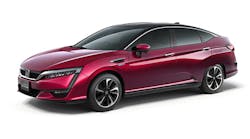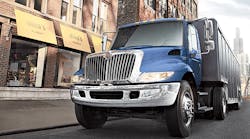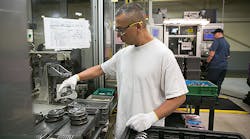Honda Motor Co. and General Motors are preparing to produce automotive fuel cells, with the Japanese automaker indicating plant will be manufacturing fuel cell “stacks” within the next decade. The two automakers have been allied developing hydrogen fuel cell technology since 2013.
The location of the plant and details of the fuel cell technology remain unclear.
At an event in Japan to introduce the Clarity sedan, Honda’s first fuel-cell vehicle, CEO Takahiro Hachigo confirmed a Japanese news service report from earlier this year that Honda and GM would set up a factory to manufacture fuel-cell stacks, starting production by 2025 at the latest. Each company would incorporate their shared technology into vehicles they will manufacture separately.
A fuel cell is a device that converts the chemical energy from some fuel source into electricity via chemical reaction of positively charged hydrogen ions with oxygen (or another oxidizing agent.) Typical hydrogen fuel cells produce relatively small amounts of energy, so the devices are assembled in series (or “stacks) to achieve sufficient levels of voltage to power a vehicle or some other application.
The hydrogen-powered Honda Clarity reportedly has the longest driving range of any zero-emission vehicle. It will be available to government and business fleet operators before its available to ordinary car buyers, but may be available for lease in California later this year, according to some reports.
While the forthcoming Clarity will be powered by a hydrogen fuel cell, Honda has indicated subsequent designs may feature battery-electric and plug-in hybrid powertrains.
General Motors is not known to be developing a hydrogen-powered vehicle now, though in the past it developed and tested such models. Its 2017 Chevrolet Bolt EV, appearing later this year, will be a battery-powered electric car. GM also will offer a plug-in hybrid version of the Chevy Volt.










